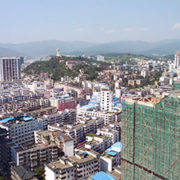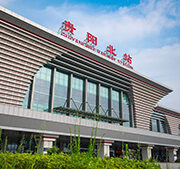
About Li Xu
Li Xu is a senior research fellow at the Asian Development Bank Institute.New challenges, opportunities, and strategic choices for financing sustainable urbanization in the PRC

In recent years, the People’s Republic of China (PRC) has accelerated its urbanization process and increased its urbanization rate from 35.88% in 2000 to 56.7% in 2016, equating to over 1% year-on-year growth. The PRC proposed the “people-oriented” New-type Urbanization Plan in 2014 to definitively release further domestic demand potential, promote social equity and welfare improvements, and facilitate economic, social, and ecological integrated development.
Innovations in managing local government debt in the People’s Republic of China

The scale of local government debt (LGD) increased in most countries after the global financial crisis of 2008, resulting in accumulated potential fiscal risk and even systematic risk. Strengthening the management of LGD to avoid risk has become a hot topic. What is the current situation of LGD in the People’s Republic of China (PRC)? Is it high risk or not? What innovations are being implemented? Are there new challenges facing the Chinese government? What are the next steps? These issues, among others, have gained wide attention around the world.
What are the policy options for reversing productivity decline?

The world economy at present is in the middle of profound adjustment. Slow economic growth and obvious economic divisions are resulting in the self-fulfilling “low-growth trap”, while productivity is declining all over the world and income inequality is worsening at the country level. These trends have been interacting and blending with each other since the global financial crisis of 2008 and have triggered a vicious cycle that has become an obstacle to world economic recovery.


Search
Subscribe / Connect to Asia Pathways
Subjects
- Agriculture and natural resources
- Blog
- Capacity development
- Climate change
- Economics
- Education
- Energy
- Environment
- Finance sector development
- Gender
- Governance and public sector management
- Health
- Industry and trade
- Information and Communications Technology
- Infrastructure
- Miscellaneous
- Population
- Poverty
- Private sector development
- Regional cooperation and integration
- Sanitation
- Social development and protection
- Transport
- Uncategorized
- Urban development
- Video Blog
- Water
Recent Posts
- Transforming ASEAN: Advancing Regional Integration, Social Inclusion, and Environmental Sustainability
- Development of the Creative Economy in Asia and the Pacific
- Kashima City’s Great Transformation: Where Industry Meets Community
- Mechanization Driving the Future of Agriculture in Asia
- Natural Capital: Valuing Nature to Protect and Restore Ecosystem Services for Sustainable Development




Recent Comments